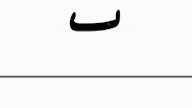Farsi Phonetics Transcription
Note: This Article is about writing system (Farsi Phonetics) in Iran and Afghanistan. In Tajikistan, people use Cyrillic writing system.
Persian Sounds, Letters and Alphabet
For many people, who are interested in Farsi, learning Persian writing system is usually considered as an obstacle, especially when they figure out that the majority of course books are written in Persian Alphabet and there is no way to avoid learning how to read in Farsi in the first step. However, in Farsimonde group, we have a new perspective on teaching Persian. In our website, Instagram page and our lessons on YouTube, all phrases are written in Persian Alphabet, transcribed into Latin Alphabet including some IPA symbols, and finally translated into English. In our fundamental sourcebook, the lessons are all transcribed according to the same system, but in each lesson, you will learn 3-4 Persian letters based on the words you are learning in each unit. So, you can start learning Farsi right now, without being worried about how to read in Persian. First, you just need to learn Farsimond group’s transcribing protocol.
Most of the sounds in Farsi have an equivalent in other languages. There are a few exceptions that you need to add to the sounds you already know because of your own language. In this page, you can listen to the sounds and examples, see each letter and its allocated symbol in our transcribing system and get familiar with each sound’s pronunciation place by checking the pictures and videos for each sound. But before going through the letters and sounds, there are a few facts about Persian writing system that might be useful to know.
Persian Alphabet is very similar to Arabic writing system, but believe us, Persian and Arabic are two different languages with different grammar and background. If your first language is Arabic or you have learnt it as a second language, you will not have difficulty reading in Farsi. You need to add 4 letters to Arabic writing system “p, g, č, ž”. One of the important facts to know about Persian and Arabic writing is that the number and position of dots play a very important role to change the pronunciation. Take a look at following examples to see what it means:
- t → (two dots on top) ت
- b → ( one dot under) ب
- p → (three dots under) پ
Persian has 23 sounds, including six vowels and 17 consonants. The vowels are categorized into two groups of short and long vowels, which are “a, e, o” and “â, i, u”, respectively. In Persian writing, we do not usually show the short vowels, unless not writing them leads to misunderstanding. For instance, if you are supposed to write “zan”, woman, in Farsi what you see would be two letters “zn”, “زن”. Moreover, some sounds, such as “s” or “z”, are denoted with more than one letter. However, the pronunciations of these letters are the same in Farsi, so on this website transcribing symbols are allocated to Persian sounds not letters.
Persian Alphabet has 32 letters. In reality, you need to learn almost 60 various shapes. In Persian writing system, there are no capital and lowercase letters, but for most of the letters, their shapes change based on their positions in words because letters can connect to each other. Let’s see an example here:
- The Farsi word “sib”, apple, consists of three letters “س، ی، ب” but if you write these letters separately, nobody will understand what you mean. You should connect the letters to form “سیب”.
Some of these 32 letters cannot be attached to any letter after them, including “â, r, ž, v”, but for the rest of them you should learn how to attach every letter to their previous or coming letters. In the phonetic table below, you can see which letters should attach and how they change. This means some letters have three or four shapes depending on their position in a word, so a beginning letter differs from the same letter when it comes in the middle or at the end of the word.
Moreover, you cannot attach two words together, unless they are always used as one word. Take “ketâbxâne(h)”, library, as an example. It contains two free morphemes “ketâb”, book, and “xâne(h)”, house. Since these two words formed a new one, you can write them as one word.
Finally, in addition to letters, there are four symbols which you have to learn to be able to read without any problems, hamze(h), tašdid, tanvin, x â. You can find them at the end of the phonetic table in this section. In new Persian writing system (Farsi phonetics), especially for instant messaging, tašdid and xâ are rarely used.
All these explanations may frighten you, but do not let this complication disappoints you to learn Persian. There are many videos, lessons and instructions for you to start reading in Farsi. Do not hesitate and start now, we are here with you in Farsimonde.
آ = â
- Title in Persian: Aleph اَلِف
- Example: Arm

اَ = a
- Title in Persian: Aleph الف
- Example: Cat

اِ = e
- Title in Persian: Aleph الف
- Example: bed

اُ = o
- Title in Persian: Aleph الف
- Example: bold

او = u
- Title in Persian: Aleph الف
- Example: noon

ایـ = i
- Title in Persian: Aleph الف
- Example: sit

ب = b
- Title in Persian: ب
- Example: Bed

پ = p
- Title in Persian: پ
- Example: Pet

ت = t
- Title in Persian: ت
- Example: Table

ث = s
- Title in Persian: ث
- Example: Sun

ج = j
- Title in Persian: جیم
- Example: Jungle

چ = č
- Title in Persian: چ
- Example: Church

ح = h
- Title in Persian: ح
- Example: Hello

خ = x
- Title in Persian: خ
- Example: SheiKH

د = d
- Title in Persian: دال
- Example: Door

ذ = z
- Title in Persian: ذال
- Example: Zero

ر = r
- Title in Persian: ر
- Example: Red

ز = z
- Title in Persian: ز
- Example: Zero

ژ = ž
- Title in Persian: ژ
- Example: Pleasure

س = s
- Title in Persian: سین
- Example: Sun

ش = š
- Title in Persian: شین
- Example: SHine

ص = s
- Title in Persian: صاد
- Example: Sun

ض = z
- Title in Persian: ضاد
- Example: Zero

ط = t
- Title in Persian: طا
- Example: Table

ظ = z
- Title in Persian: ظا
- Example: Zero

ع = ‘
- Title in Persian: عین
- Example: ?!

غ = q
- Title in Persian: غین
- Example: ?!

ف = f
- Title in Persian: ف
- Example: Fish

ق = q
- Title in Persian: قاف
- Example: ?!

ک = k
- Title in Persian: کاف
- Example: black

گ = g
- Title in Persian: گاف
- Example: Good

ل = l
- Title in Persian: لام
- Example: Late

م = m
- Title in Persian: میم
- Example: Mother

ن = n
- Title in Persian: نون
- Example: Noon

و = v
- Title in Persian: و
- Example: Valid

هـ = h
- Title in Persian: هـ
- Example: Hello

ی = y
- Title in Persian: ی
- Example: Year

ئ = ‘
- Title in Persian: همزه
- Example: ?!

ّ = writing a consonant twice
- Titel in Persian: Tashdid تشدید
- Example: bella

اً = an
- Title in Persian: Tanvin تنوین
- Example: ??

خوا = xâ
- Title in Persian: ?!
- Example: ?!


